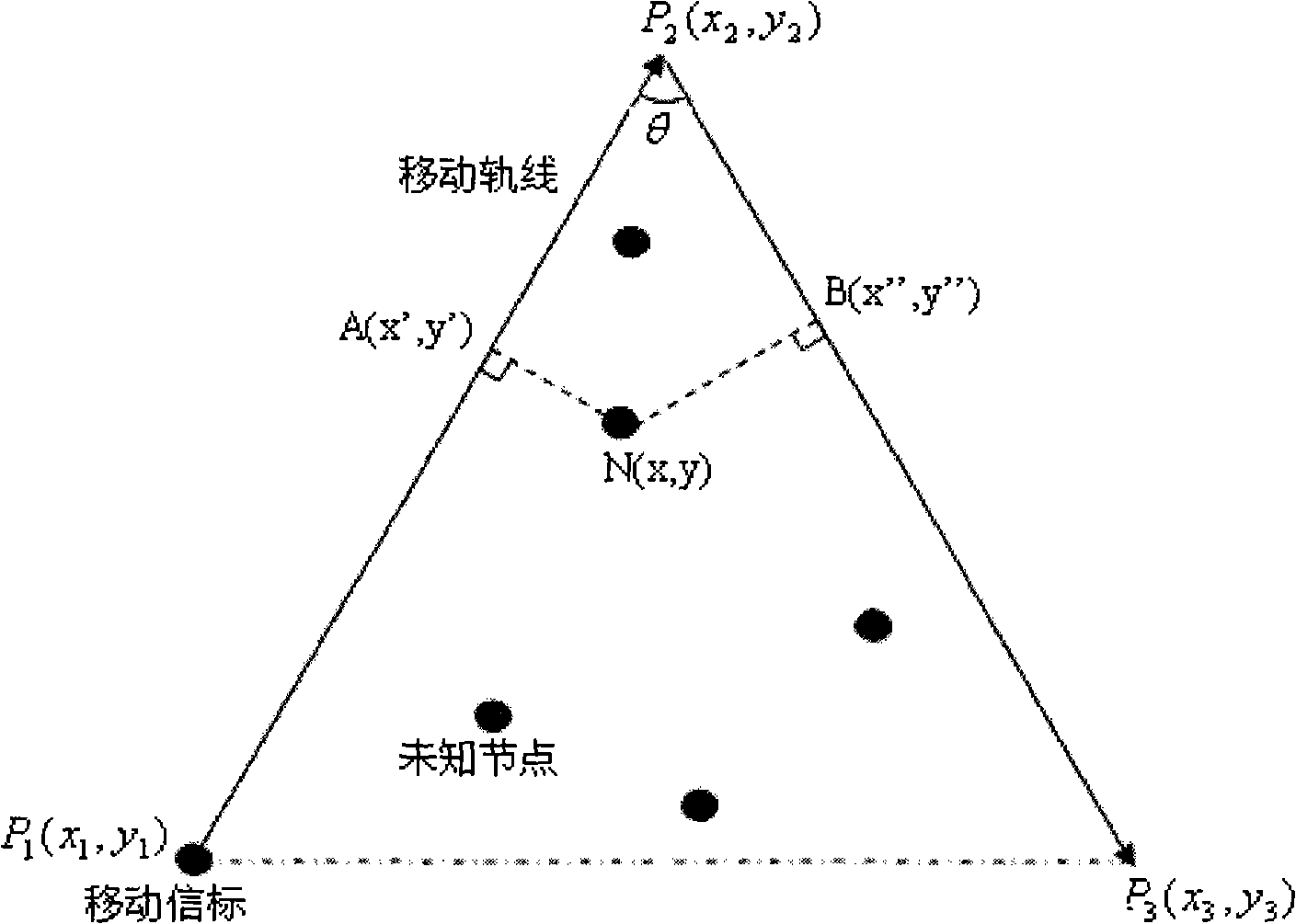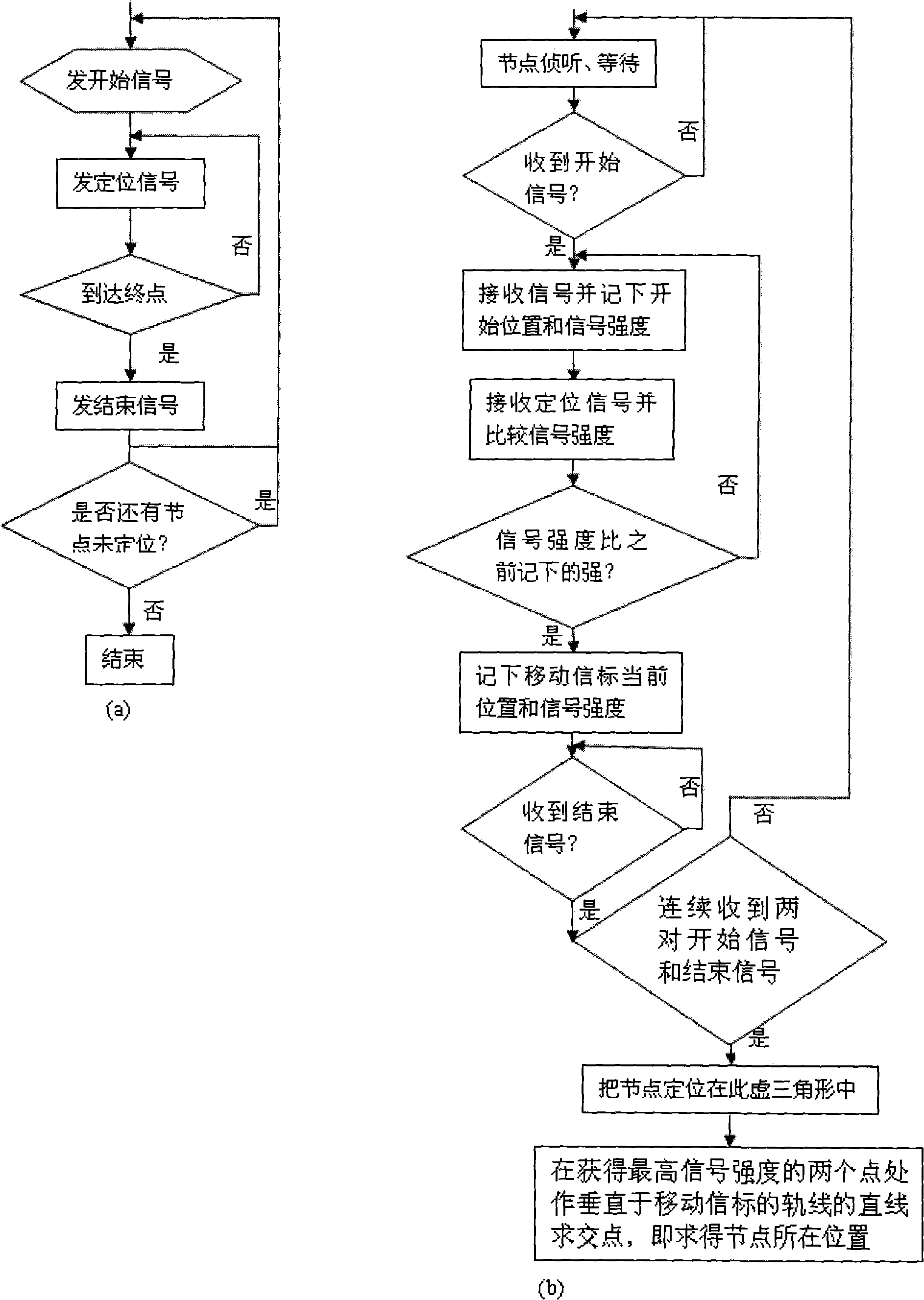Wireless sensor network perpendicular intersection positioning algorithm
A wireless sensor, vertical intersection technology, used in positioning, radio wave measurement systems, instruments, etc., can solve the problem of large positioning error, achieve the effect of small calculation amount, simple algorithm, and avoid positioning error
- Summary
- Abstract
- Description
- Claims
- Application Information
AI Technical Summary
Problems solved by technology
Method used
Image
Examples
Embodiment Construction
[0045] Below in conjunction with accompanying drawing, the implementation of the present invention is described in detail as follows:
[0046] refer tofigure 1 , figure 1 An example of a sensor network is given in 2 to illustrate the vertical intersection localization algorithm. After the sensor network is configured, mobile beacons move through the network and broadcast beacon signals periodically. The beacon signal contains the location of the mobile beacon at the time of the broadcast. After receiving the beacon signal, the sensor node knows that the mobile beacon is somewhere nearby. figure 1 The solid line in is the trajectory of the mobile beacon, and the arrow points to its moving direction. The mobile beacon starts at point P 1 , terminate at point P 3 , point P 2 is the inflection point of mobile beacons. The propagation radius of the mobile beacon is R, and the dotted line P 1 P 3 with the trajectory P of the mobile beacon 1 P 2 P 3 An imaginary equilatera...
PUM
 Login to View More
Login to View More Abstract
Description
Claims
Application Information
 Login to View More
Login to View More - R&D
- Intellectual Property
- Life Sciences
- Materials
- Tech Scout
- Unparalleled Data Quality
- Higher Quality Content
- 60% Fewer Hallucinations
Browse by: Latest US Patents, China's latest patents, Technical Efficacy Thesaurus, Application Domain, Technology Topic, Popular Technical Reports.
© 2025 PatSnap. All rights reserved.Legal|Privacy policy|Modern Slavery Act Transparency Statement|Sitemap|About US| Contact US: help@patsnap.com



